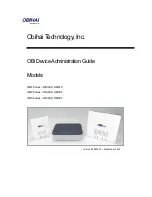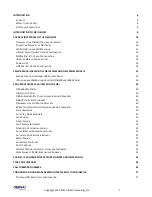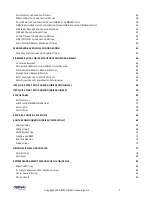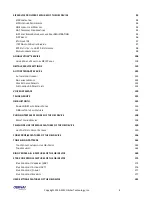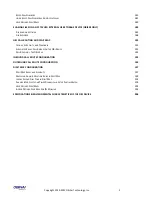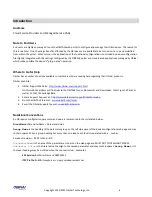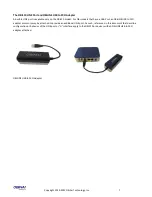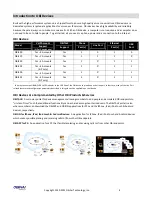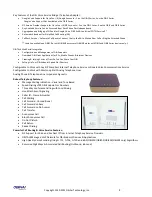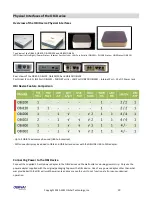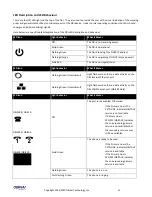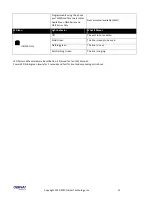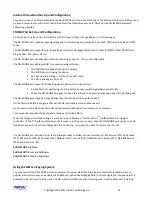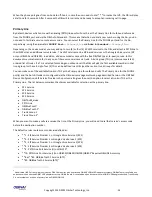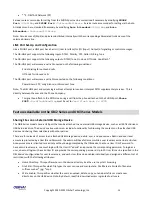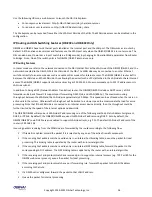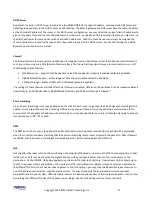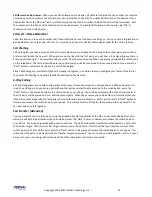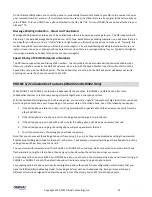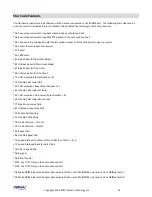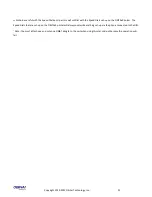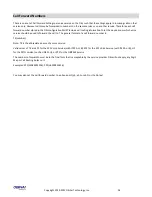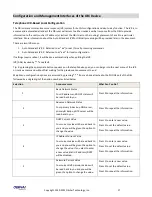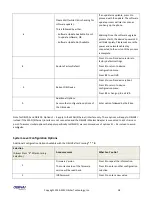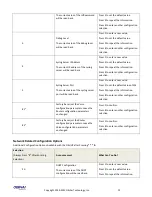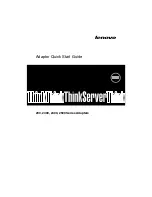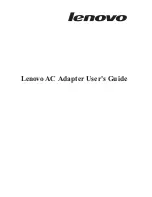
Copyright 2010-2013 Obihai Technology, Inc.
15
** 9 : OBiTALK Network (PP)
Service route access codes for calling from the PHONE port can be customized if necessary by modifying
PHONE
Port::
DigitMap
and
PHONE Port::
OutboundCallRoute
. Service route access codes for calling via the Auto
Attendant can be customized if necessary by modifying
Auto Attendant::
DigitMap
and
Auto
Attendant::
OutboundCallRoute
.
Note: Occurrences of (Mpli) and pli are substituted internally with the corresponding abbreviated trunk name of the
selected primary line.
LINE Port Set-Up and Configuration
Like a PHONE port, a LINE port has a basic UI (User Interface) for I/O (Input / Output) of signalling or control messages:
The OBi LINE port supports the following inputs: DTMF, Polarity, CPC, Caller ID, Ring, Tone
The OBi LINE port supports the following outputs: DTMF/Tone, On Hook, Off Hook, Hook Flash*
The OBi LINE port will assume a call is Connected on the following conditions:
End of dialing for outbound calls
Off-hook for inbound calls
The OBi LINE port will assume a call is Disconnected on the following conditions:
Power Down, CPC, Long Silence, or Disconnect Tone
Note: The OBi LINE port and system logic will not attempt to invoke or interpret PSTN supplementary services. This is
directly between the user and the Phone Company.
To signal hook-flash to the PSTN Line during a call from the phone attached to the PHONE port,
Phone
PORT::
HookFlashHandling
must be set to
Send Flash Hook to PSTN
Features Available on the OBi2 Series and OBi3 Series Models
Sharing Files on an External USB Storage Device
The OBi2 Series models have a USB port that can be attached to an external USB storage device, such as a USB flash drive or
USB hard disk drive. The device’s native web server includes functionality for browsing the contents on the attached USB
device and sharing them selectively with other parties.
There are three levels of access to an attached USB storage device,
admin
,
user
, and
anonymous
. Admin and user level
access are protected by a User ID and Password. The admin will have full access while a user level access can be restricted.
Anonymous access is limited to read-only without being prompted by the OBi device to enter a User ID or Password. To
have admin level access, one must login with the User ID “admin” and provide the corresponding password. To login as a
user, one must login with a valid User ID and provide the corresponding password. Up to 10 User IDs can be specified in the
OBi device’s configuration for user level access, and each User ID can be enabled individually and assigned a different set of
restrictions with the following attributes:
Home Directory: This specifies where in the device directory tree the user nay start browsing.
File Filter: This specifies which file types the user can see and manipulate. File filters are limited to filename
suffixes such as *.jpg; *.mp3
Write Enable: This specifies whether the user can upload, delete, copy, cut and paste files or create new
directories on the USB device. Note: By default, read/file-download access is granted to all users.
Summary of Contents for OBi100
Page 54: ...Copyright 2010 2013 Obihai Technology Inc 54...
Page 55: ...Copyright 2010 2013 Obihai Technology Inc 55...
Page 58: ...Copyright 2010 2013 Obihai Technology Inc 58...
Page 75: ...Copyright 2010 2013 Obihai Technology Inc 75...
Page 100: ...Copyright 2010 2013 Obihai Technology Inc 100...
Page 109: ...Copyright 2010 2013 Obihai Technology Inc 109 SP1 SP2 SP3 and SP4 Services...
Page 126: ...Copyright 2010 2013 Obihai Technology Inc 126...
Page 135: ...Copyright 2010 2013 Obihai Technology Inc 135...
Page 140: ...Copyright 2010 2013 Obihai Technology Inc 140...
Page 157: ...Copyright 2010 2013 Obihai Technology Inc 157...
Page 158: ...Copyright 2010 2013 Obihai Technology Inc 158...
Page 159: ...Copyright 2010 2013 Obihai Technology Inc 159...
Page 174: ...Copyright 2010 2013 Obihai Technology Inc 174...
Page 185: ...Copyright 2010 2013 Obihai Technology Inc 185...

